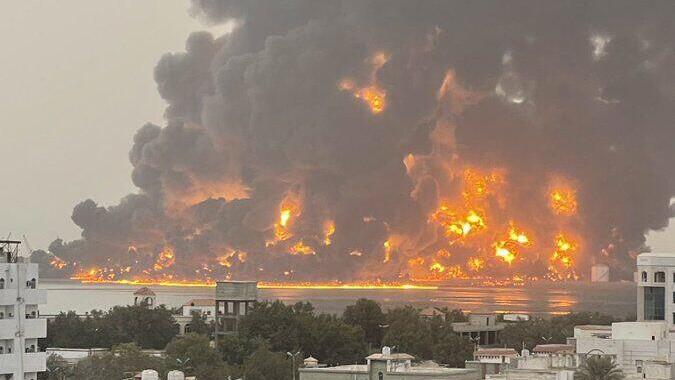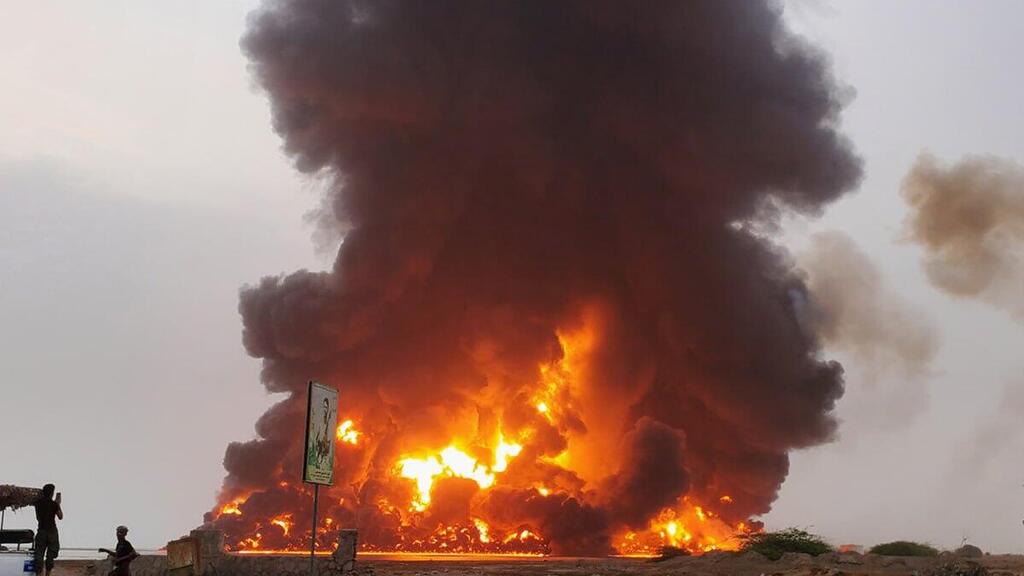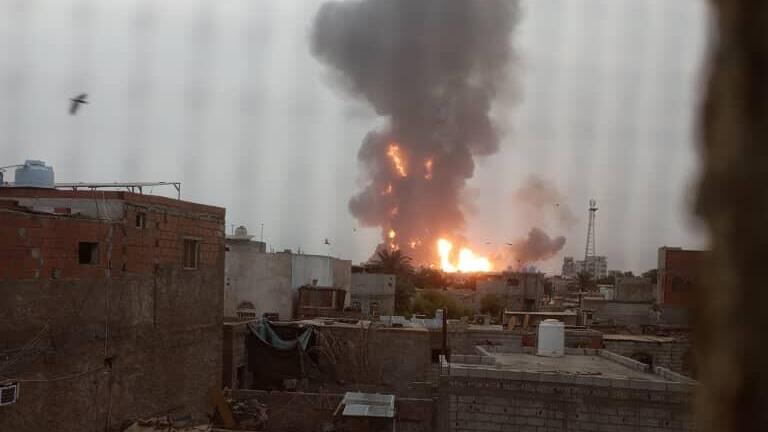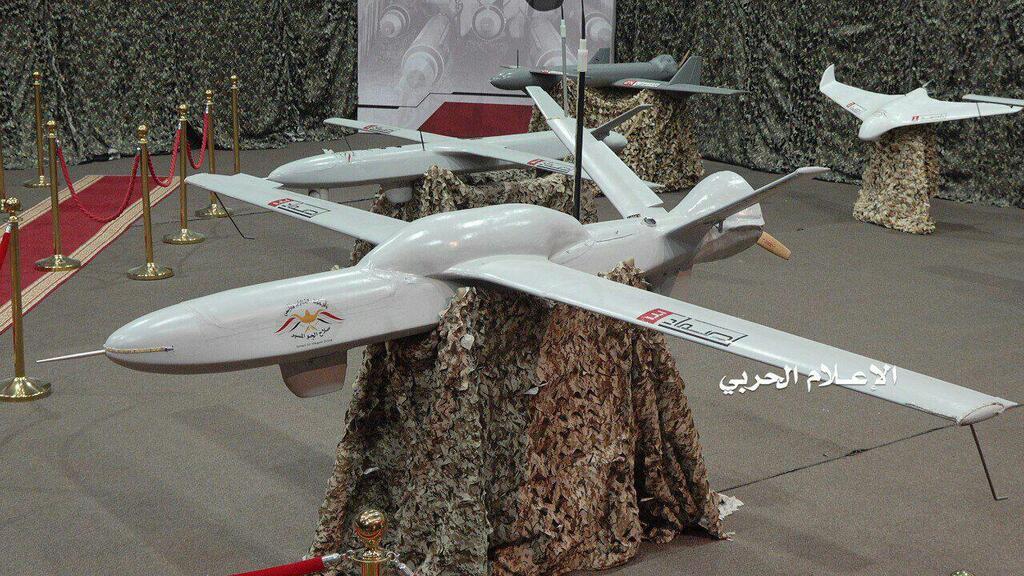Getting your Trinity Audio player ready...
Footage from the explosion in Yemen
International news outlets reported on Saturday of explosions in Yeme’s port city of Hodeidah, controlled by the country’s Houthi rebels, two days after the terror group’s drone exploded in Tel Aviv near the U.S. embassy in the city. Before the attack, a photo of what seems to be a refueling aircraft was published on Arab news outlets.
The IDF Spokesperson’s Unit confirmed on Saturday that Israeli Air Force fighter jets were behind the attack on Houthi-controlled Hodeidah in Yemen.
“A short while ago, IDF fighter jets struck military targets of the Houthi terrorist regime in the area of the Hodeidah Port in Yemen in response to the hundreds of attacks carried out against the State of Israel in recent months,” the military said in a statement.
Estimations say the strike was likely coordinated with Saudi Arabia in order to cross airspaces located close to its territory. The strike targeted Iranian military equipment facilities, oil dispensers and a military airport in an attempt to harm the main path for Iran to deliver weapons to the terror group.
U.S. officials were hasty to distance themselves from the attack and said that “Israel acted alone.”
Saudi news outlet Al Hadath reported shortly after the incident that "dozens were killed and injured," in the attack. “Complexes belonging to economic institutions and the military police were targeted,” they said.
Hezbollah-affiliated Lebanese news outlet Al Mayadeen reported shortly after the incident, "The attack in the port of Hodeidah in western Yemen was carried out by Israeli F-35 fighter jets."
Israeli sources told Ynet on Friday that "a response will come against the Iranian drone fired by the Houthis. The option of action on Yemeni soil is on the table, and it shouldn’t be ruled out that a response will take place there."
At the beginning of the war in Gaza, Israel debated whether and how to respond to Houthi threats. Some believed they should be attacked and deterred — among other things, by attacking Houthi assets including ports — but it was ultimately decided to leave action against the terror group to the U.S. as part of the international coalition that formed in the area.
The coalition occasionally attacks inside Yemen and intercepts missiles and drones launched from Houthi-controlled zones, while the Houthis continue to attack ships in the Red Sea — both civilian and coalition-owned. The Houthis have also never stopped their launching toward Israel, leading to Friday’s deadly attack.
Investigation into the deadly drone attack in Tel Aviv on Friday reveals the drone used different routes on its 2,000 km journey to confuse the IDF detection systems. The drone's payload was relatively small, carrying a few kilograms of explosives to extend its flight time, limiting its damage.
The IDF continues to investigate the drone's flight plan. According to the preliminary findings, the drone circumvented Israel, crossed the Sinai Peninsula, and infiltrated Israel through the Mediterranean Sea. The drone lowered its altitude to avoid detection. Only then did it ascend to the height of nearby buildings along the promenade.
The Houthis have launched more than 200 drones and cruise missiles at Israel since October 7. The data shows that so far, only one drone and one cruise missile made contact with Israeli soil, with most of the projectiles being intercepted by USCENTCOM and the Air Force. The overall number of projectiles from the east including Yemen, Iraq, and Iran totals at around 1,000 launches.
The drone exploded in the heart of Tel Aviv, on the corner of Ben Yehuda Street and Shalom Aleichem, near the U.S. Embassy Branch Office in Tel Aviv. Yevgeny Perder, 50, was killed in the blast, and nine other people were lightly injured, some from shrapnel and debris, and some from shock.
According to the IDF, the Iranian-made Samid-3 is a suicide drone, which according to Arab world media can fly long distances up to 1,700 km. According to reports in the Arab world, the Houthis first used it in 2018. In the past, the Houthis announced that they attacked the Saudi national Abha Airport with the drone, as well as in Abu Dhabi in 2022.









